Chapter 25: Japanese Art
0.0(0)
Card Sorting
1/22
Earn XP
Description and Tags
Art History
AP Art History
Japanese Art
Japan
Genre painting
Mandorla
Ukiyo-e
Haboku
Yamato-e
Zen Buddhism
Japanese Tea Ceremony
Japanese Architecture and Sculpture
Todai-ji
Ryoan-Ji
Japanese Painting and Printmaking
Polychrome prints
Suzuki Harunobu
Night Attack on the Sanjô Palace
White and Red Plum Blossoms
Under the Wave off Kanagawa
the Great Wave
12th
Study Analytics
Name | Mastery | Learn | Test | Matching | Spaced |
|---|
No study sessions yet.
23 Terms
1
New cards
kamikaze
The Mongols attempted to invade in 1281 but their fleet was destroyed by a typhoon called .
2
New cards
Continuous narrative
a work of art that contains several scenes of the same story painted or sculpted in continuous succession
3
New cards
Genre painting
painting in which scenes of everyday life are depicted
4
New cards
Haboku (splashed ink)
a monochrome Japanese ink painting done in a free style in which ink seems to be splashed on a surface Kondo
5
New cards
Mandorla
(Italian, meaning “almond”) a term that describes a large almond-shaped orb around holy figures like Christ and Buddha
6
New cards
Tarashikomi
a Japanese painting technique in which paint is applied to a surface that has not already dried from a previous application
7
New cards
Ukiyo-e
translated as “pictures of the floating world,” a Japanese genre painting popular from the seventeenth to the nineteenth century
8
New cards
Yamato-e
a style of Japanese painting that is characterized by native subject matter, stylized features, and thick bright pigments
9
New cards
Zen
a metaphysical branch of Buddhism that teaches fulfillment through self-discipline and intuition
10
New cards
Meditation
It is essential for enlightenment, and samurai warriors use it to perform acts of bravery and physical endurance.
11
New cards
Japanese Tea Ceremony
a highly sophisticated ritual that may seem simple to the Westerner.
12
New cards
Teahouses
have bamboo and wooden walls, floor mats of woven straw, and everything is arranged with straightforwardness and delicacy.
13
New cards

Todai-ji
* A two-story building with long, graceful eaves hanging over the edges: the eaves protect the interior from the sun and rain.
* This is the original center of the Buddhist faith in Japan
* The temple is noted for its colossal sculpture of seated Vairocana Buddha.
* This is the original center of the Buddhist faith in Japan
* The temple is noted for its colossal sculpture of seated Vairocana Buddha.
14
New cards
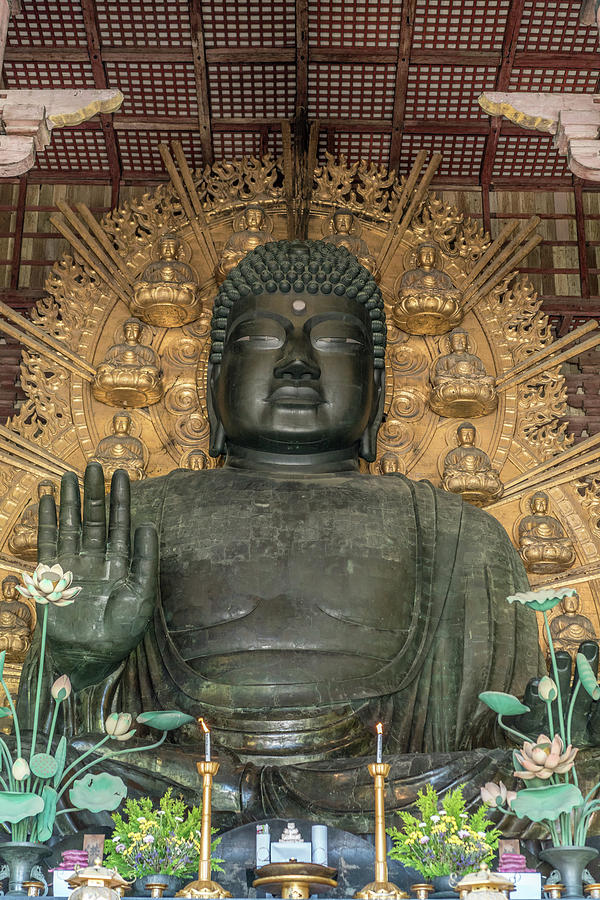
Great Buddha, Todai-ji
* Largest metal statue of Buddha in the world.
* Monumental feat of casting.
* Emperor Shōmu embraced Buddhism and erected sculpture as a way of stabilizing Japanese population.
* Monumental feat of casting.
* Emperor Shōmu embraced Buddhism and erected sculpture as a way of stabilizing Japanese population.
15
New cards
Mudra
right hand means “do not fear”; left hand means “welcome.”
16
New cards
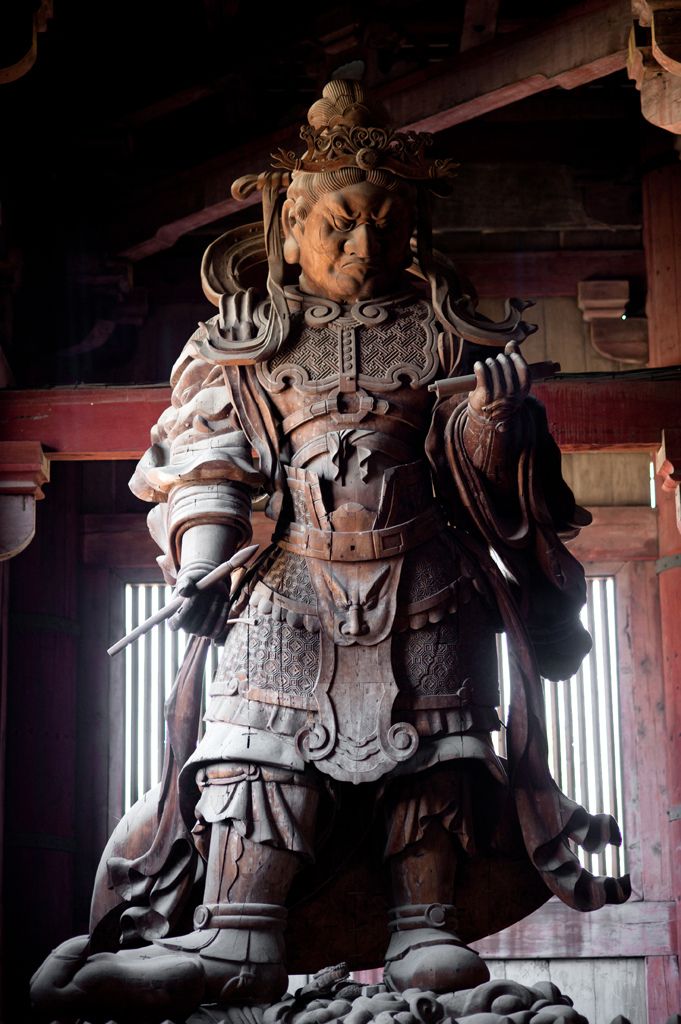
Nio guardian figures, Todai-ji
* They are placed on either side of the Todai-ji south gate.
* Masculine, frightening figures that protect the Buddha derived from Chinese guardian figures such as those at Luoyang.
* Masculine, frightening figures that protect the Buddha derived from Chinese guardian figures such as those at Luoyang.
17
New cards
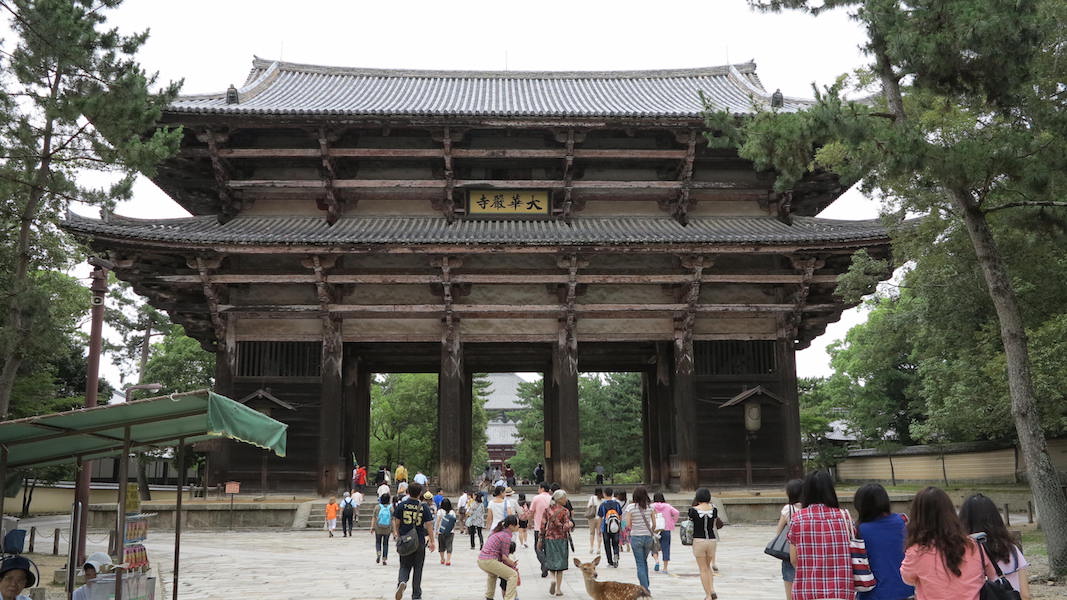
Great South Gate of Todai-ji
This is the main gate of Todai-ji.
18
New cards
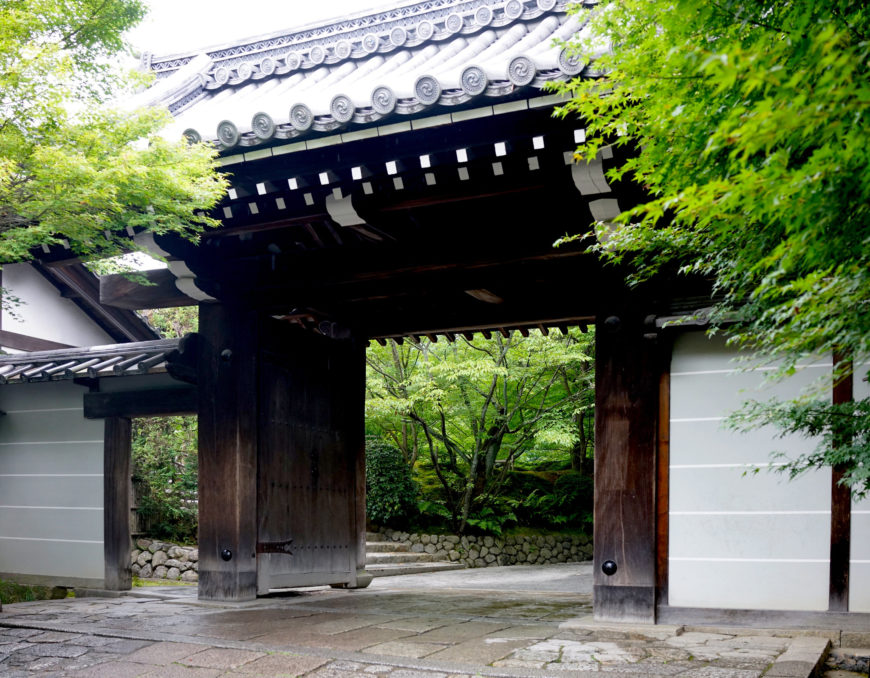
Ryoan-Ji
* From Muromachi period; c. 1480; current design 18th century
* a temple located in north Kyoto, Japan affiliated with a branch of
* Zen Buddhism.
* a temple located in north Kyoto, Japan affiliated with a branch of
* Zen Buddhism.
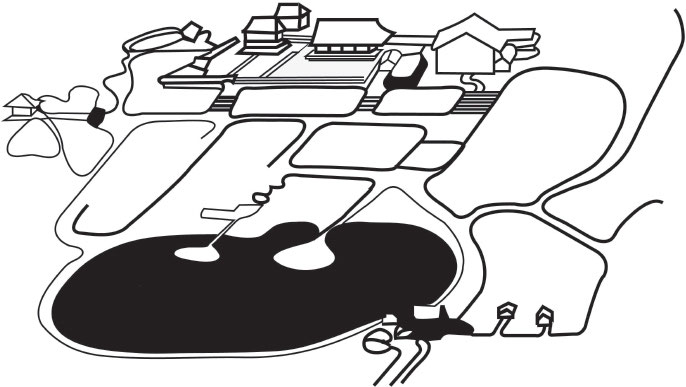
19
New cards
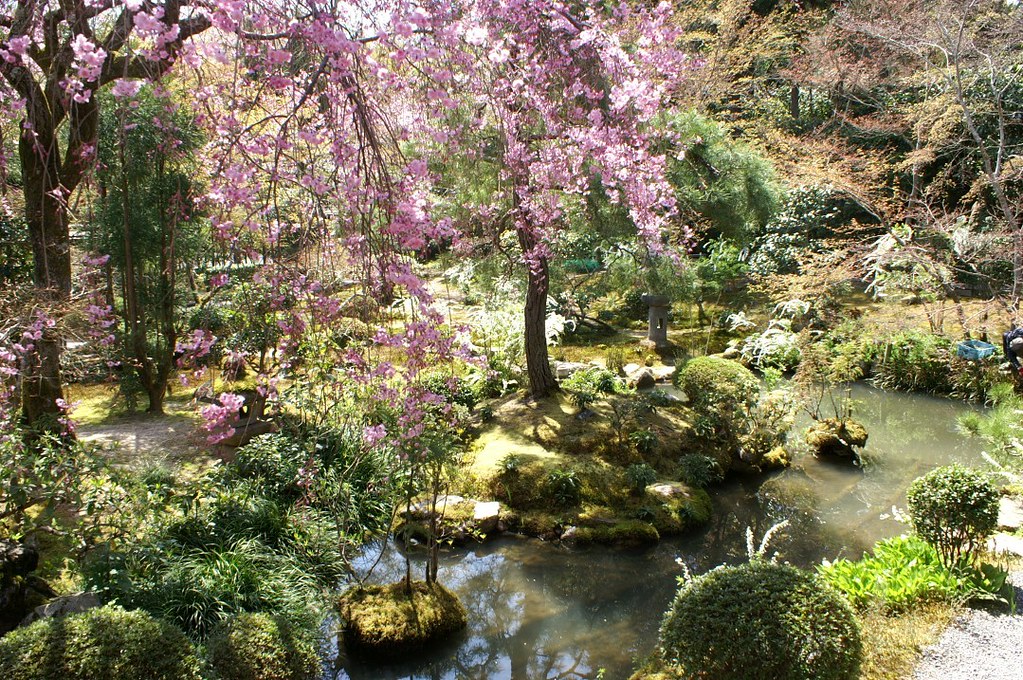
Zen Wet garden, Ryoan-Ji
* Gravel represents water
* Rocks represent mountain ranges.
* The garden is bounded on two sides by a low, yellow wall.
* Meant to be viewed from a veranda in a nearby building, the abbot’s residence.
* Rocks represent mountain ranges.
* The garden is bounded on two sides by a low, yellow wall.
* Meant to be viewed from a veranda in a nearby building, the abbot’s residence.
20
New cards
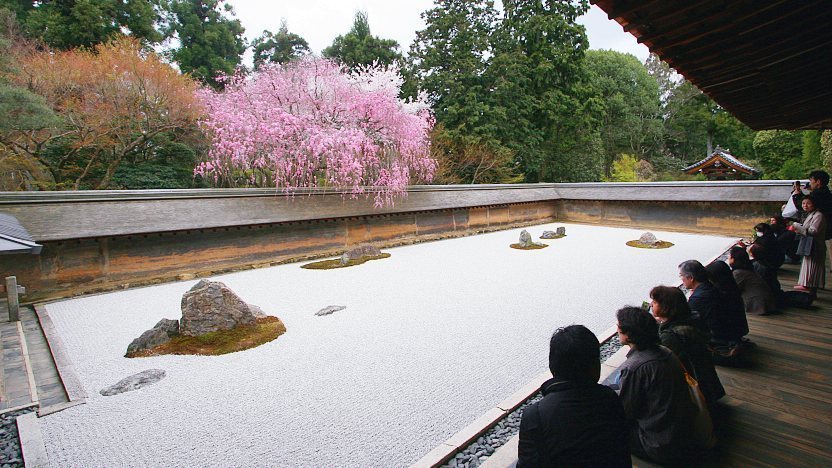
Zen Dry garden, Ryoan-Ji
* Contains a teahouse.
* Seemingly arbitrary in placement, the plants are actually placed in a highly organized and structured environment symbolizing the natural world.
* Water symbolizes purification; used in rituals.
* Seemingly arbitrary in placement, the plants are actually placed in a highly organized and structured environment symbolizing the natural world.
* Water symbolizes purification; used in rituals.
21
New cards

Night Attack on the Sanjô Palace
* Reflected in the large quantity of war-related literature and paintings.
* Scroll depicts a coup staged in 1159 as Emperor Go-Shirakawa is taken prisoner.
* Imperial palace in flames
* Scroll depicts a coup staged in 1159 as Emperor Go-Shirakawa is taken prisoner.
* Imperial palace in flames
22
New cards
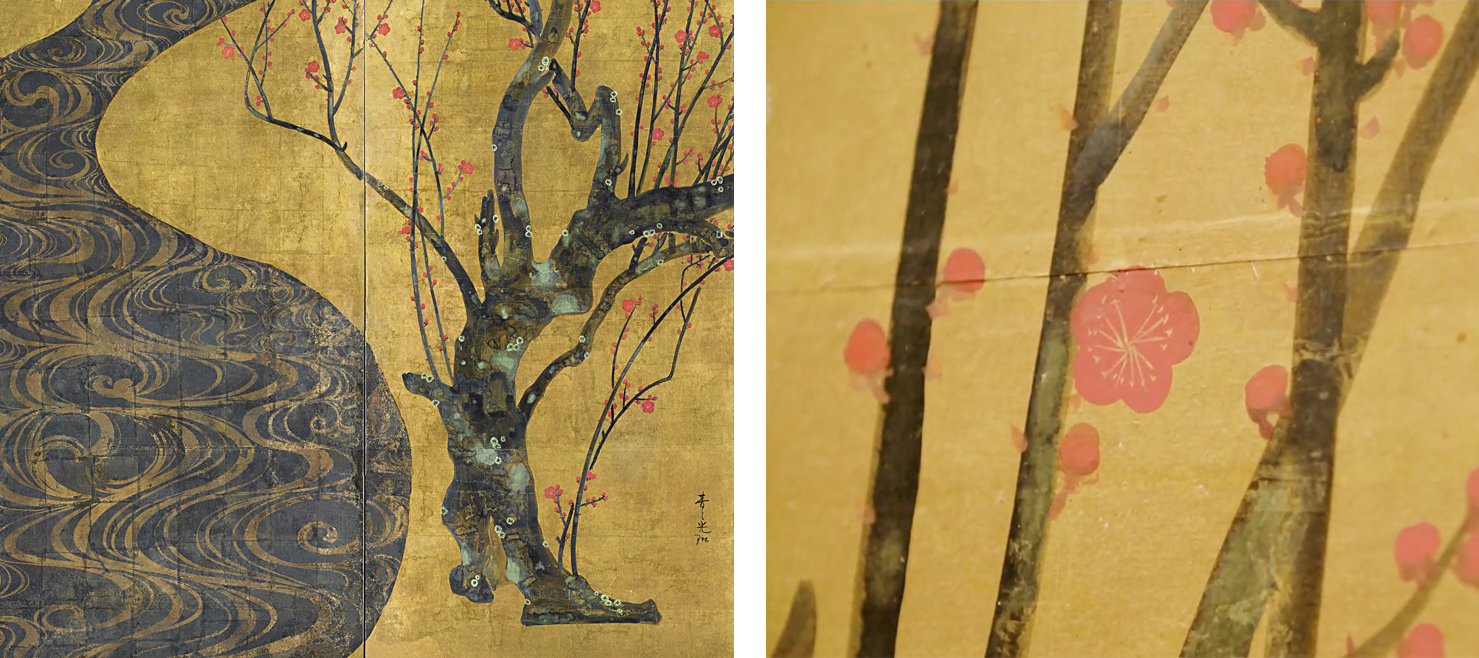
White and Red Plum Blossoms
* By Ogata Korin (1710–1716)
* A stream cuts rhythmically through the scene; swirls in the paint surface indicate water currents.
* The work is influenced by the yamato-e style of painting.
* Tarashikomi technique
* A stream cuts rhythmically through the scene; swirls in the paint surface indicate water currents.
* The work is influenced by the yamato-e style of painting.
* Tarashikomi technique
23
New cards
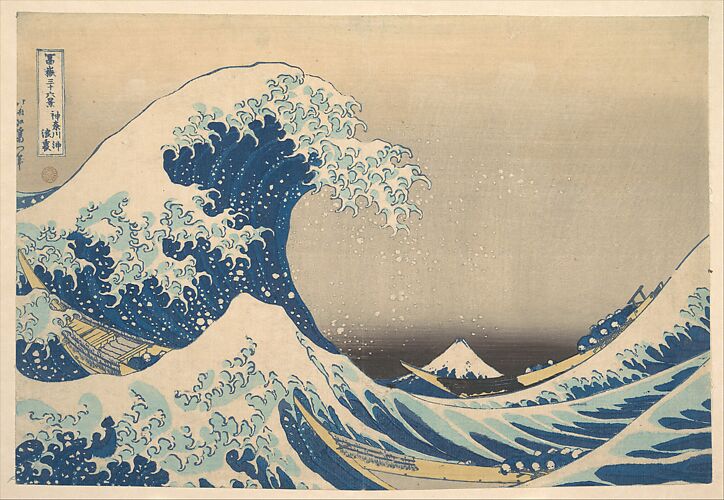
Under the Wave off Kanagawa (Kanagawa oki nami ura)
* By Katsushika Hokusai (1830–1833)
* Also known as the Great Wave
* from the series Thirty-six Views of Mount Fuji
* The print was designed by an artist on paper, and then an engraver copied the design onto a woodblock.
* Also known as the Great Wave
* from the series Thirty-six Views of Mount Fuji
* The print was designed by an artist on paper, and then an engraver copied the design onto a woodblock.